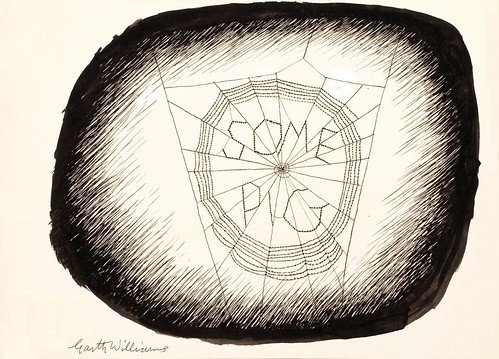
Spiders have always fascinated me. The way they movie. Their cunning traps to get their prey. But the thing that fascinates me the most is what comes out of their rare end. No I am not talking about feces, i am talking about the silk they excrete. This fascinates me because spiders have developed a material that far surpasses anything humans have ever made for tensile strength. Yes spider silk is stronger than any kind of man made rope or steel for the same diameter. Diversity of Molecular transformations Involved in the Formation of Spider silk is the paper I decided to do my third blog on.
 I always thought spiders produce one type of silk and it was made in a single gland in the abdomen. After reading this article, these little invertebrates which creep or scare people, tend to make me more fascinated. Orb web spiders have glands such as serigene glands. The glands are located in the abdomen. Spiders can secrete up to seven different types of silk. Each type of silk has its own gland. The glands between spider species can differ greatly. They can be a different size and shape. The shape can be spherical, tubular or pear shaped. They can be singular or multiple and can differ in length. The silk is made from aqueous proteins that become solid. The organs themselves consists of three parts. A tail, sac and a duct. These three compartments work together to make the proteins. store the proteins in a aqueous solution and the conversion from solution into a fiber. The proteins are collectively known as spidroins. This process is usually under tension. The strength of the silk fiber is determined by the secondary structures forming by particular repeats in proteins. An example of the structure is a beta sheet. These proteins fold to form their secondary and tertiary structures the same as amino acids fold to make functional proteins. Rather than single amino acids folding (dependent on their side chains) to form a protein, the proteins have motifs and submotifs. The motifs are short repeating units which fold to form secondary and tertiary structures. The different proteins also respond differently to temperature. It is very difficult to research the glands and silk due to their size. Although with advancements on technology probes could be used. The probes detect the vibrational bands due to amino acid side chains. The paper went into detail about the protein conformations of the different silks. If you are interested in finding more the link below will hopefully work and you can read the paper.This technology is similar way as infrared spectroscopy does. This paper went into a lot more biochemical detail than i did. But hopefully after reading this blog you have a better understanding and appreciation for the achievements by the orb web spiders.
I always thought spiders produce one type of silk and it was made in a single gland in the abdomen. After reading this article, these little invertebrates which creep or scare people, tend to make me more fascinated. Orb web spiders have glands such as serigene glands. The glands are located in the abdomen. Spiders can secrete up to seven different types of silk. Each type of silk has its own gland. The glands between spider species can differ greatly. They can be a different size and shape. The shape can be spherical, tubular or pear shaped. They can be singular or multiple and can differ in length. The silk is made from aqueous proteins that become solid. The organs themselves consists of three parts. A tail, sac and a duct. These three compartments work together to make the proteins. store the proteins in a aqueous solution and the conversion from solution into a fiber. The proteins are collectively known as spidroins. This process is usually under tension. The strength of the silk fiber is determined by the secondary structures forming by particular repeats in proteins. An example of the structure is a beta sheet. These proteins fold to form their secondary and tertiary structures the same as amino acids fold to make functional proteins. Rather than single amino acids folding (dependent on their side chains) to form a protein, the proteins have motifs and submotifs. The motifs are short repeating units which fold to form secondary and tertiary structures. The different proteins also respond differently to temperature. It is very difficult to research the glands and silk due to their size. Although with advancements on technology probes could be used. The probes detect the vibrational bands due to amino acid side chains. The paper went into detail about the protein conformations of the different silks. If you are interested in finding more the link below will hopefully work and you can read the paper.This technology is similar way as infrared spectroscopy does. This paper went into a lot more biochemical detail than i did. But hopefully after reading this blog you have a better understanding and appreciation for the achievements by the orb web spiders. http://www.sciencedirect.com.ezproxy.lincoln.ac.nz/science/article/pii/S0022283610011824


